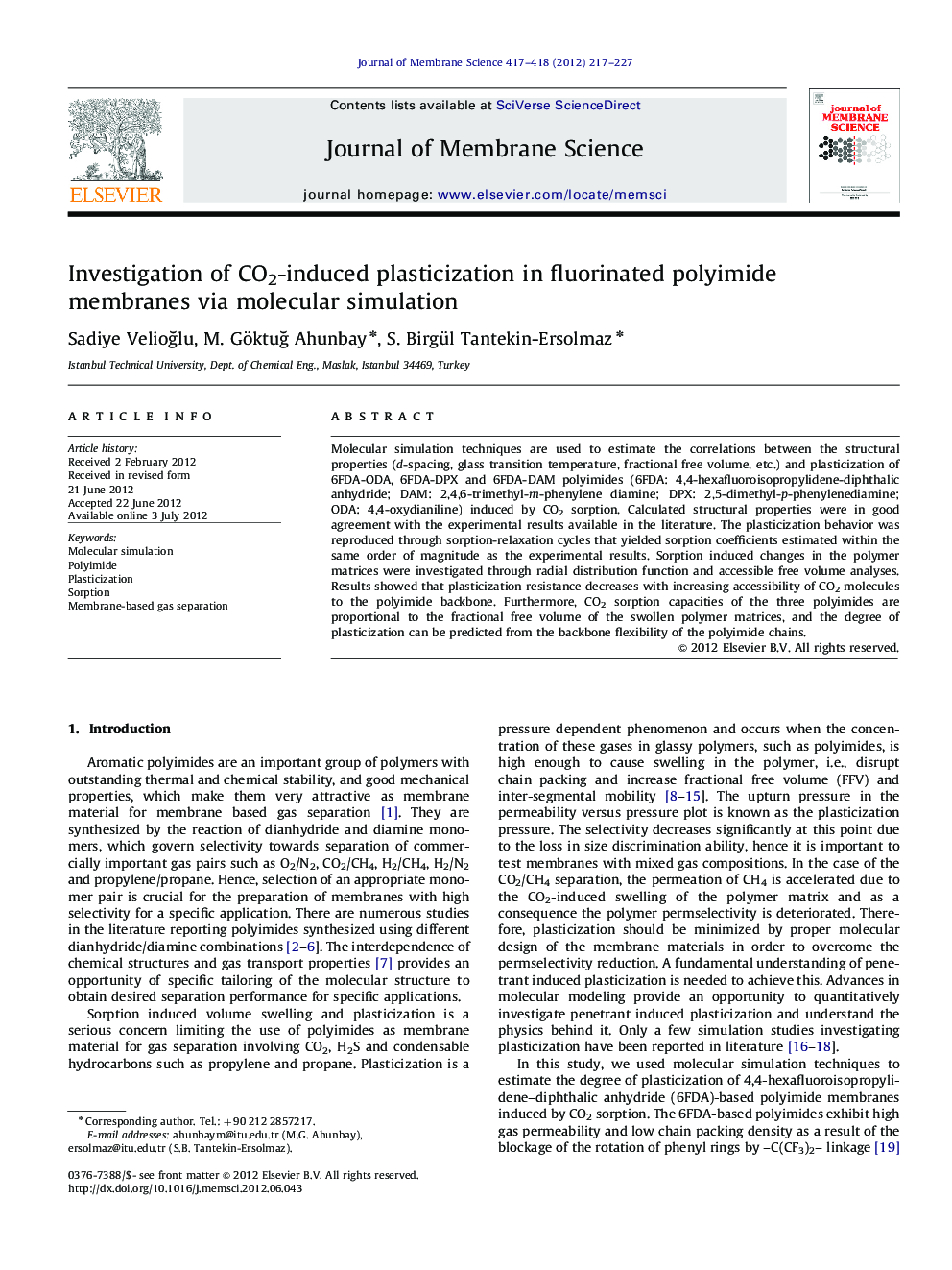| Article ID | Journal | Published Year | Pages | File Type |
|---|---|---|---|---|
| 634901 | Journal of Membrane Science | 2012 | 11 Pages |
Molecular simulation techniques are used to estimate the correlations between the structural properties (d-spacing, glass transition temperature, fractional free volume, etc.) and plasticization of 6FDA-ODA, 6FDA-DPX and 6FDA-DAM polyimides (6FDA: 4,4-hexafluoroisopropylidene-diphthalic anhydride; DAM: 2,4,6-trimethyl-m-phenylene diamine; DPX: 2,5-dimethyl-p-phenylenediamine; ODA: 4,4-oxydianiline) induced by CO2 sorption. Calculated structural properties were in good agreement with the experimental results available in the literature. The plasticization behavior was reproduced through sorption-relaxation cycles that yielded sorption coefficients estimated within the same order of magnitude as the experimental results. Sorption induced changes in the polymer matrices were investigated through radial distribution function and accessible free volume analyses. Results showed that plasticization resistance decreases with increasing accessibility of CO2 molecules to the polyimide backbone. Furthermore, CO2 sorption capacities of the three polyimides are proportional to the fractional free volume of the swollen polymer matrices, and the degree of plasticization can be predicted from the backbone flexibility of the polyimide chains.
Graphical AbstractFigure optionsDownload full-size imageDownload high-quality image (159 K)Download as PowerPoint slideHighlights► We modeled three 6FDA-polyimides with different CO2-plasticization resistances. ► We used molecular simulation methods to reproduce CO2-induced plasticization. ► Degree of plasticization correlates with diamine–dianhydride linkage flexibility. ► CO2 solubilities can be predicted from diamine to dianhydride linkage flexibility.
